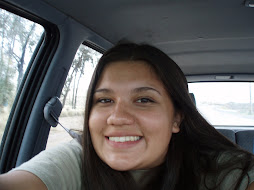 Rafino came to greet me as soon as I got off the little boat. I later found out that he was a member of the first regional parliment.
Rafino came to greet me as soon as I got off the little boat. I later found out that he was a member of the first regional parliment. I spent most of my time on the island talking to Rev. Cleveland McCrea, the Rama Reverand of the islands only church. He has gone all over the world for different indigenous conferences. I found this out when I showed him pictures from the UW powwow and he said that the outfits looked like Sami things because there were so many bright colors. Turns out quite a few Sami have come to Blue Fields and Rama Cay because they wanted to work together on language revitalization projects.
I spent most of my time on the island talking to Rev. Cleveland McCrea, the Rama Reverand of the islands only church. He has gone all over the world for different indigenous conferences. I found this out when I showed him pictures from the UW powwow and he said that the outfits looked like Sami things because there were so many bright colors. Turns out quite a few Sami have come to Blue Fields and Rama Cay because they wanted to work together on language revitalization projects. Rama Cay basketball court...
Rama Cay basketball court... Clevelands Grandchildren, they had fun telling me what pictures to take, looking at them and giggling. Their mom was busy making corn cake on the fire when I visited their home and she offered me some. It was soo good! Basically just finely ground corn, sugar and coconut.
Clevelands Grandchildren, they had fun telling me what pictures to take, looking at them and giggling. Their mom was busy making corn cake on the fire when I visited their home and she offered me some. It was soo good! Basically just finely ground corn, sugar and coconut. Rama Cay from the water, I have more pictures of the island, houses, pigs dogs and chickens that are everywhere you look, but this is by far my favorite.
Rama Cay from the water, I have more pictures of the island, houses, pigs dogs and chickens that are everywhere you look, but this is by far my favorite.
View of blue fields from the porch-balcony of the carribean dream hotel where I stayed my first night.
I really can´t imagine what my perspective of Nicaragua would be if I hadn´t visited the atlantic coast. An entirely different country, and as I am learning more about the history (Thank you local historian Hugo Sujo Wilson) people here on the coast never wanted to be a part of Nicaragua in the first place. There is so much emphasis here on the multi-ethnic multicultural identity, I feel like I could stay here for years and see a different aspect of the complex coastal identity and life each day.
This is also the first time in my travels that I have been in that slightly awkward uncomfortable position of being reminded that I am an American and what the United States involvement has been. I was sitting down today with 80 year old Doc. Roberto Hudson and he quoted the U.S. Gov. response to civil war in Nicaragua by saying ¨have peace! have peace! put out your arm and we´ll give you a dollar each have peace!¨ He had many things to say about the U.S. in terms of Nicaraguan history and current events, but it was very interesting how much his conversation with me, the way he was speaking to me changed when I told him that I am from a tribe in Washington state that is in a similar position of having natural resources, but difficulty in maintaining sustainability and economic success, and also having plenty of horrible experience with the good ole u. s. of a. Our conversation shifted into what it means to take action, what it means to make an effort to organize and to work towards equality. How fighting often means struggling, struggling together.
He described himself and the people of the Nicaraguan coast as not being poor, ¨Can´t be called poor because we have all these things (natural resources), we are miserable because we let someone else take what we have¨
Hugo gave me an old copy of the Autonomy Statute for the Regions of the Atlantic Coast of Nicaragua (known as Law number 28) and I will really treasure this little crumbling booklet for as long as it lasts.
Page one, article III:
That the multi-ethni identity of the Nicaraguan people is greatly inspired by the exploits of Indian-American heroes like Diriangen, Cuauhtemoc, Caupolican, and Tupac Amaru who never backed down, and by the deeds of Augusto C. Sandino who gave hope and determination to the Indians of the Rio Coco with their agricultural and mining cooperatives, and who proclaimed proudly to the world ¨I am Nicaraguan and I am proud because, more than anything else, Indian blood course through my veins which atavistically contains the mystery of being patriotic, loyal, and sincere.¨
I think I´ll say goodbye fore now, or in Rama: Mick-tamaskey

No comments:
Post a Comment